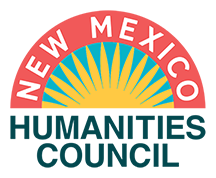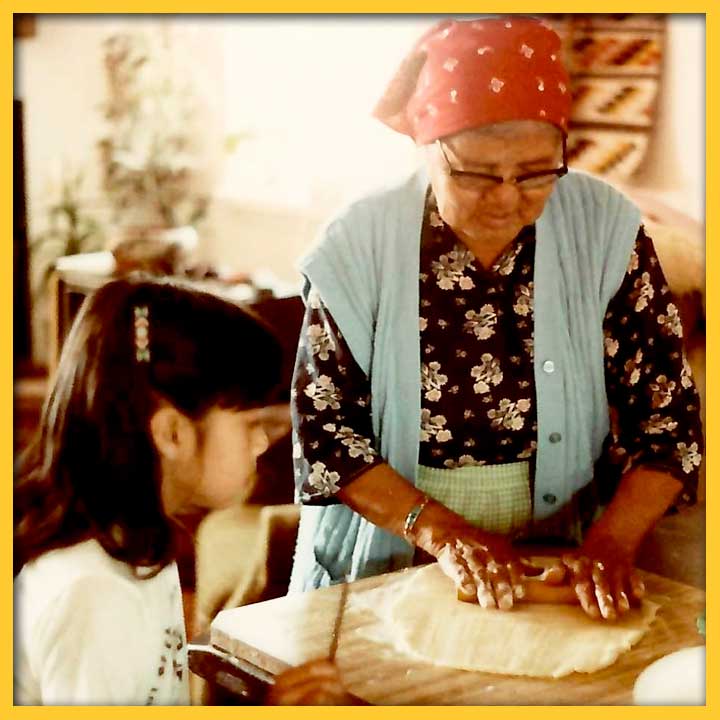SHARE:
It is clear when looking around our community that women have a hand in everything. When I was a kid, one place where this was evident to me was at my grandmother’s house. I would awaken to the smell of eggs, sausage, potatoes, fresh tortillas, or whatever she cooked up for breakfast that morning waiting for me on the kitchen counter while she stood nearby ironing dad’s dress shirts. She had already been up for hours buzzing about the house, while I slept. Our days were fueled by her seemingly endless energy. I ate meals, bathed, and did all those things related to self-care under her guidance. In hindsight, she had very little time for her own care other than to sit down to her “stories” (soap operas) which she watched on weekdays.
In between keeping house and caring for children, she ran an at-home business. She organized all the materials we needed to make necklaces: beads (glass, corn, and melon seeds), leather pieces, thread, needles, and a heavy dose of patience. While the kids strung necklaces, she worked on beaded leather baby booties and pouches. She also made traditional shawls, dresses, and shirts, but these were not for sale to outsiders. In years past, she made pottery; a craft that my mom also carried on for a short time. Grandmother displayed this inventory on a blanket laid on the brick floors of the Palace of the Governors portal in Santa Fe. In these hours away from home, she and my mom sat in front of the old Spanish building engaging with American tourists and racking up sales.
On the days that Grandmother spent at home, inevitably there would be a knock at the door. Usually it was one of her comadres (refers to a co-mother responsibility in Pueblo culture; and in Spanish translates to friends) in the village stopping by to share what they had, and, in turn, Grandmother shared what she had — food, table scraps for pigs and chickens, news of village happenings, laughs, or a helping hand. Like a “bandana brigade,” these women seemed ready to face whatever obstacles that came their way. Most of them wore bandanas wrapped around their heads and tied at the nape of their necks. These pieces of cotton fabric were multipurpose, serving as a fan on sweltering hot summer days, a towel to wipe the sweat off a brow when pulling weeds, or a hairnet because one never knew when they were going to have to mix a 25-pound tub of bread.
These women had a lot of work to do; they kept everything in our community in working order, and they did it together. They embodied a toughness that I understood from a young age was specific to females. They “lived their resilience” and, in turn, taught it to the next generation through example. There is a word in Keres that refers to the inherent strength and perseverance of females. I have heard it during challenging times in my life, reminding me of my “superpower” such as during a difficult labor when my mother held my hand and encouraged me to “take it like a woman” in acknowledgement of the strength of the women that came before us and reassuring me that I possessed it too. Pueblo belief holds females as central, as the creators of life and caretakers of home and community. As a matrilineal society, Pueblo clan membership follows the mother’s line and property passes down through the female.
In addition to caring for family and community, many of the women that Grandmother surrounded herself with also contributed to their families as makers of pottery, jewelry, leatherwork, food, and traditional clothes. This was the 1980s, and more Pueblo women also took on wage work outside of the village because none of these opportunities existed there except for the few jobs working for the tribe, the nearby school, or clinic. Higher education opportunities also took women away from the village.
Pueblo women’s work patterns had begun to change decades earlier with the arrival of tourists to New Mexico. During this time, pottery shifted from a utilitarian to a tourist item, and women, as makers of pottery, were responsible for keeping up with demand. Pottery making was originally women’s work, but some men assisted with pottery painting and eventually became makers themselves. There are notable examples of Pueblo women artists who maneuvered this shifting economy, including painter Tonita Peña (Cochiti Pueblo) and potter Maria Martinez (San Ildefonso Pueblo). Both were mothers, caretakers of family and community, and distinguished by the outside world for their achievement in the arts. For each of these well-known Pueblo women there are many more who did not garner recognition for their efforts beyond their families and community.
With modernization heightening in the 1950s, people in Cochiti finally had access to electricity, indoor plumbing, and individual automobile ownership. With these changes also came the financial burden of monthly bills. As the need for money became more important than ever to upkeep a “modern” Pueblo home, the shift from barter to cash intensified. More families undertook crafting handmade items for sale to tourists to address economic need, making the lives of Pueblo women busier than ever.
Throughout the year, Pueblos have a full calendar dictated by Indigenous, Catholic and American celebrations as well as life events including births, naming ceremonies, baptisms, birthdays, graduations, weddings, funerals, traditional society initiations and leadership selections to name a few. In support of these events, women prepare foods; maintain spaces and tools dedicated to food production including outdoor ovens and piki bread houses; sew traditional clothing; maintain homes and other community spaces, and receive guests. When there is a death in the village, women are the first to show up with contributions of groceries for the family. With helping hands, they also bring their hearts — community well-being is their guiding principle. They assist the family for several days on end, making sure that the deceased is prepared for burial, the home is clean, the food donations are organized and distributed to helpers, and that the family and visitors are fed three meals a day. And more, they offer moral support during a time when the tenderest of care is needed. This is no small task, and women do it together.
Today, Pueblo women still maintain a rigorous schedule — caring for families and community, pursuing higher education, maintaining jobs outside the home, and continuing the industriousness established by their grandmothers as makers of various handcrafted items whether for sale or to be used in traditional ceremonies. Pueblo women excel in careers addressing health, education, environmental, and social justice. United States Secretary of the Interior Deb Haaland (Laguna Pueblo) exemplifies this leadership at the national level. Like their mothers and grandmothers, Pueblo women continue to redefine and expand their roles as caretakers of community.
For Further Reading:
Gray, Samuel L. Tonita Peña. Albuquerque, NM: Avanyu Publishing, 1990.
Kapoun, Bob, ed. Clay Mirror, from Monos to Storytellers: Reflections from Cochiti Pueblo. Santa Fe, NM: Rainbow Man, 2020.
Spivey, Richard L. The Legacy of Maria Poveka Martinez. Santa Fe: Museum of New Mexico Press, 2003.
Suina, Joseph H. “Getting Accustomed to the Light.” In The Continuous Path: Pueblo Movement and the Archaeology of Becoming, edited by Samuel Duwe and Robert. W. Preucel, 242–253. Tucson: University of Arizona Press, 2019.
PASA POR AQUÍ
ADDITIONAL BLOG ARTICLES
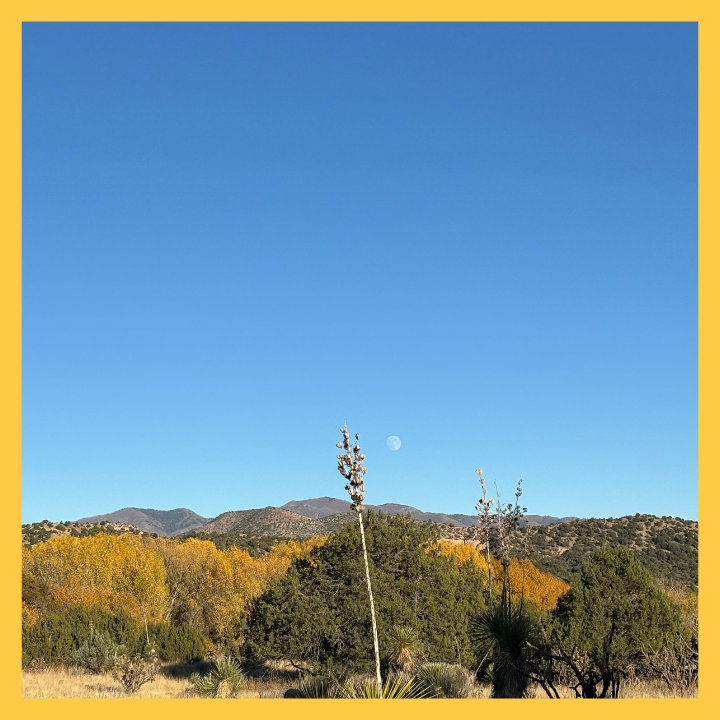
SCANNING FOR STORIES
It was a Friday afternoon in November and I was driving on a state road through the hills of the Mimbres Valley. The entire landscape was bathed in a golden hue because the tree leaves had made their full conversion to a bright yellow color just before falling off the branches.
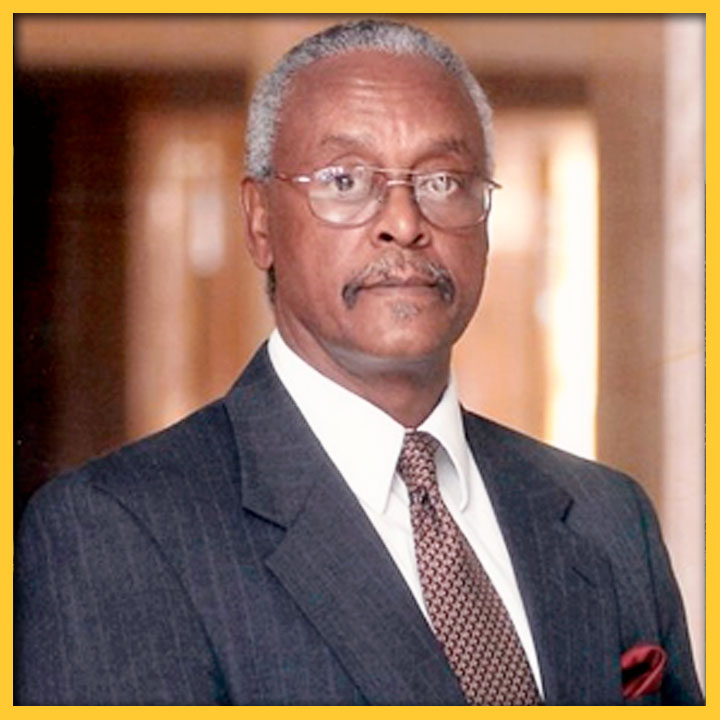
REFLECTIONS ON THE LOSS OF A NEW MEXICO CIVIL RIGHTS LEADER
By Carlyn N. Pinkins, M. A.
“The Dr. Harold Baileys of the world should inspire us all to do what we can to leave our communities, our towns and cities – our great state – better places than we found them. While we do our part to create the Dr. Harold Baileys of the future, we should also strive to make sure that the Dr. Harold Baileys of our past and present are never forgotten.”
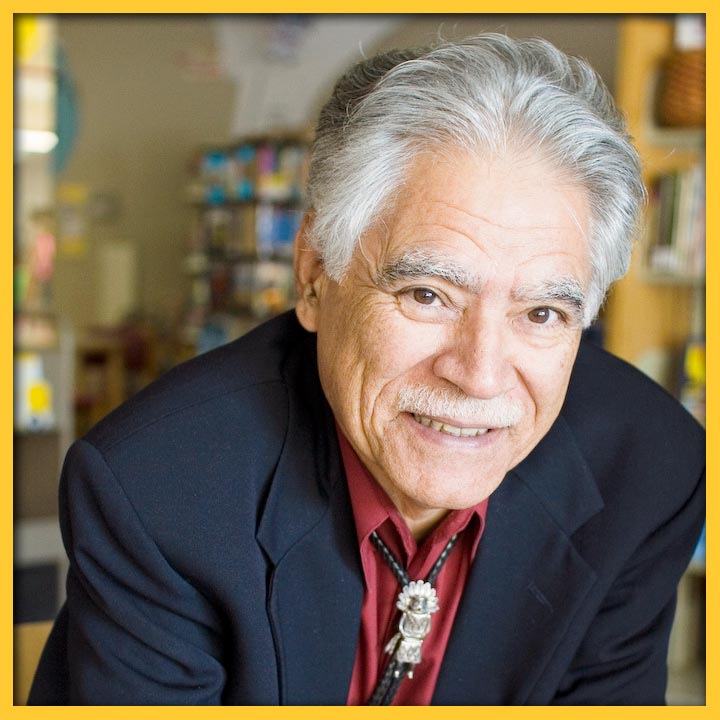
RUDOLFO ANAYA: CATCHING CULTURES IN BLESS ME, ULTIMA
By Richard Wayne Etulain
Anaya greatly expands the cultural contributions of his novel by combining the usual (Bildungsroman—growing up theme) with the unusual (complex, diverse New Mexico Hispanic culture)…
SHARE:
DISCLAIMER:
Any views, findings, conclusions or recommendations expressed in this blog post/article does not necessarily represent those of the New Mexico Humanities Council or the National Endowment for the Humanities.
ABOUT THE AUTHOR:
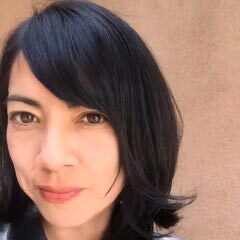
KIM SUINA MELWANI
Kim Suina Melwani is from the Keresan-speaking village of Cochiti Pueblo. She holds an MA in U.S. West history from the University of New Mexico, and currently researches and writes on topics related to Native history and culture.
